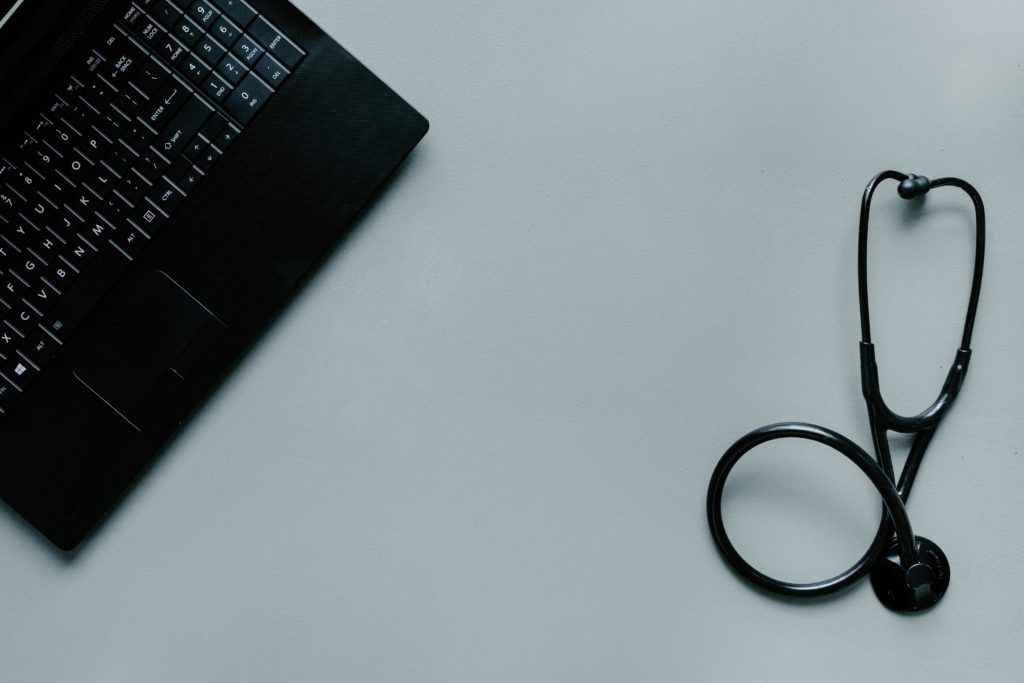HIPAA Compliant Telehealth Platform
Using technology to make the process of receiving care more convenient has quickly become an industry standard for healthcare organizations. Medical records are now stored on an electronic database to minimize a paper chase. Educational resources are readily available online for patients seeking additional research about a condition or symptoms they are experiencing. Now, patients can even visit with their doctor virtually with HIPAA compliant Telehealth.
Telehealth services have redefined the industry by making practice management and patient care more efficient. Many patients struggle to commute to their doctor’s office. As a result, their care is neglected. Now, thanks to Telehealth services, these patients can prioritize their health from the comfort of their own home.
Even though Telehealth services provide an undeniable aspect of convenience for healthcare entities, it still runs the risk of a cyberattack. Maintaining HIPAA compliance is essential for healthcare entities that use Telehealth services. A HIPAA compliant Telehealth platform allows providers to efficiently communicate with patients and colleagues while simultaneously keeping private information safe.
What is Telehealth?

Telehealth is a broad term that can mean a variety of things. In short, however, it uses digital technology to provide healthcare services when multiple parties are not in the same location.
Telehealth is essentially a doctor’s visit without the need for a doctor’s office. Virtual healthcare services can be provided using a laptop, tablet, or mobile device, which promotes long-distance clinical care.
Communications via Telehealth are not exclusive to patients and providers. Physicians often consult with each other via video conferencing to discuss a case or treatment plan for a mutual patient.
How is a HIPAA Compliant Telehealth Platform Used?
Similar to its broad definition, Telehealth services have an array of functionalities in both an administrative and clinical setting.
- Healthcare Services for Patients
- Training or Educating Staff Members
- Sharing Information with Patients or Colleagues
- Coordinating Care for a Patient
- Collecting Data
- Discussing, Gathering, or Storing Electronic Health Information
- Discussing, Gathering, or Storing Public Health Information
Modalities of a HIPAA Compliant Telehealth Platform
Telehealth can be used in many different ways to provide healthcare services. Although some modalities are used more frequently than others, it is not limited exclusively to video conferences between healthcare professionals.
Live Video
Telehealth can be conducted over a real time, live video. This is typically the most common form of Telehealth communications. It can be used to successfully execute agenda items in many different scenarios.
For example, a physician may meet with a patient over a video call to discuss their condition and treatment plan. Similarly, two doctors with a mutual patient may also meet virtually to discuss that patient’s condition and treatment plan.
Store & Forward
This modality is used to gather, store, and transmit information. Unlike a live video, it is asynchronous, meaning it does not take place in real time. For example, if a patient has a wound on their foot, they could send a photo of it to a specialist. The specialist can then have it on file and review the photo at a later time.
Remote Patient Monitoring
Sometimes, a physician may need to monitor a patient’s condition from a remote location. This is known as remote patient monitoring and can be done in real time or asynchronously.
A real time example might involve a doctor monitoring ICU patients at a hospital virtually. They can observe the patient through a monitor and then direct the on-site personnel accordingly.
An asynchronous example looks slightly different. If a physician wants to monitor a patient’s blood pressure, they can have the patient take readings from home. Then, the patient can transmit the results back to their physician virtually.
What Security Risks are Associated with Telehealth Services?

Telehealth services make quality healthcare feasible even when patients and providers are not physically at the same location. Additionally, doctors can facilitate meetings with other providers to establish a treatment plan for a mutual patient.
Overall, using virtual platforms to communicate is a valuable asset to healthcare organizations. However, Telehealth does come with security risks that may result in a data breach. As a Covered Entity (CE), you must follow HIPAA regulations when using a Telehealth platform to discuss Protected Health Information (PHI).
Physical Security
When a physician is meeting with a patient or colleague in person, the security of the environment is controlled. With both parties in a private office, they can speak freely without compromising confidential information. At the same time, it can be a challenge to get both parties in the same physical location.
During a virtual Telehealth visit, both parties can attend the appointment from the comfort of their own home. However, this amenity can pose security risks. Unlike in person meetings, Telehealth visits typically take place in an uncontrolled environment, meaning privacy is not guaranteed. If a patient is meeting with their doctor, there might be other people around at home that could overhear the conversation.
The same is applicable to other physicians. When two physicians meet on a video conference to discuss a case, they cannot control who is around. Thus, sensitive information is put at high risk for a data breach.
HIPAA regulations do not exclusively apply to physical copies of PHI, but oral transmission as well. If a third party were to overhear confidential information, the applicable party would be subject to a HIPAA violation.
Transmission Security
Sending messages to patients and other physicians has quickly become an industry standard for healthcare providers. It is convenient for both the patient and the physician. A patient can keep their physician updated virtually by sending results as needed and ultimately avoid a costly hospital visit.
If this communication channel is not HIPAA compliant, PHI can be intercepted by unauthorized personnel. For example, a physician may ask a diabetic patient to send them glucose readings while they are at home. This keeps the patient out of the hospital and gives the physician the opportunity to monitor their condition closely. However, if this information is transmitted on a network that is not secure, it may be at risk for a data breach.
Unauthorized Access
More often than not, multiple platforms are often involved during a Telehealth visit. Video platforms may be used to execute a meeting. A separate email service could then be used to send patient data or other relevant information.
Keeping track of who has access to all of these platforms can be difficult, especially in a larger healthcare organization. Additionally, these platforms may be utilized on an unsecured network and fall into the wrong hands.
Protecting data with a singular password cannot sustain the integrity of PHI on its own. Cyber attacks are becoming more technologically advanced everyday. It is essential for healthcare organizations to follow the safety guidelines set by the Office of Health and Human Services, not only with telehealth services but with secure email as well.
Data Management
Just as healthcare organizations need to manage who has access to PHI, they also need to manage how PHI is accessed. There is a correlation between the volume of confidential information and the likelihood of a data breach. The larger the amount of data- whether it be photos, video, or text- the more likely it is to be hacked.
Healthcare providers, especially those who rely heavily on Telehealth services, need to maintain the integrity of their sensitive information. This applies to data that is being stored and data that is being transmitted through telehealth, HIPAA compliant email, and otherwise. Investing in secure methods of HIPAA compliant data storage now combats the detrimental effects associated with a data breach in the future.
HIPAA Compliant Telehealth Platform
How can you take advantage of the convenience associated with Telehealth services while also protecting your patients valuable health information? The best way to do this is to utilize a HIPAA compliant Telehealth platform. This affords you the luxury of being able to work from anywhere all while maintaining HIPAA compliance.

HIPAA compliant Telehealth companies are usually a Business Associate, or BA. They act on your behalf through a business service and as such, can frequently come into contact with PHI. Healthcare organizations must obtain a Business Associate Agreement, or BAA, if they come into contact with PHI in any form. A BAA is a legally binding contract between a health care entity and a third party service that requires HIPAA compliance.
What Does a HIPAA Compliant Telehealth Platform Do?
As a healthcare provider, you want your patients to have the most convenient options available when it comes to their care. A HIPAA compliant video platform helps you to securely communicate with your patients, colleagues, and office staff.
These services allow you to efficiently communicate with your network while simultaneously ensuring that PHI is properly safeguarded. End-to-end data encryption secures data that is being stored and transmitted.
In addition to encryption, HIPAA compliant Telehealth platforms also store data on secure servers to keep it protected. This is a crucial security tactic because secure servers significantly minimize the risk of a data breach.
Our HIPAA Compliant Telehealth Platform
For over a decade, Enterprise Guardian has upheld the integrity of PHI for healthcare entities across the country. As cyberattacks became more advanced and hackers learned to bypass security tactics, so did our efforts to secure data.
At EnGuard® , our secure, HIPAA compliant Telehealth platform helps expand your network of patients. Our user-friendly services give you the opportunity to accommodate disadvantaged patients with a more convenient method of care. At the same time, you can provide the additional benefit of high-quality data security. You can use virtual visits to meet with patients, discuss cases with colleagues, and host meetings with office staff. You can even send follow-ups through our secure email services.
If you are looking for the best HIPAA compliant, cloud based Telehealth platform, contact our office today!
Telehealth FAQs
Q. What are important differences between Telehealth and in-person care?
Telehealth visits and in-person visits both accomplish the same goal. They provide quality care to patients seeking treatment. An important difference between Telehealth and in-person visits is the way in which this goal is achieved. In-person visits take place inside of a healthcare facility. This environment is controlled. Thus, it is easier to maintain the confidentiality of PHI discussed during the visit because the only people in the room are the provider and the patient. Telehealth visits, on the other hand, take place in an uncontrolled environment. While Telehealth visits are optimal for patients who struggle to commute to their doctors appointments, there are security risks. Unlike an in-person visit, a Telehealth visit can take place anywhere. As a result, unauthorized personnel can overhear PHI that is being discussed. Additionally, conducting Telehealth visits on a network server that is not secure runs the risk of a data breach. Therefore, it is crucial to maintain the best practices for data security when utilizing Telehealth modalities.
Q. How to get Telehealth services?
Telehealth services make practice management and patient care infinitely more convenient. However, it is crucial to follow The Privacy and Security Rules outlined under HIPAA when using Telehealth platforms to handle Protected Health Information (PHI). To get Telehealth services that will make attending appointments convenient for your patients and keep their PHI secured, utilize HIPAA compliant Telehealth platforms. Companies that specialize in HIPAA compliant data security services provide Telehealth platforms that will maintain the integrity of PHI.
Q. Who can provide Telehealth services?
Healthcare entities, such as providers, medical office staff, and health organizations, can provide Telehealth services to effectively communicate with patients, peers, and colleagues. Telehealth platforms are not exclusively used for virtual appointments between patients and providers. They are also used in an administrative setting to execute office meetings and act as a forum between other providers to discuss a case or treatment plan.
Q. What Telehealth platforms are HIPAA compliant?
Telehealth platforms that are HIPAA compliant implement and maintain security measures as outlined under HIPAA in order to safeguard PHI. If Telehealth services are executed on a network that is not secure, data can be accessed by unauthorized personnel. Secure, HIPAA compliant Telehealth platforms are stored on private network servers. Additionally, HIPAA compliant Telehealth platform services use access controls such as data encryption and multi-factor authentication to provide an extra layer of security. These security tactics, and many others, significantly minimize the risk of a data breach and avoid hefty fines and penalties for non-HIPAA compliance.
Q. Will Telehealth continue in 2022?
Telehealth modalities are certainly here to stay. That being said, it is crucial for healthcare entities to adapt to the digital platforms that are used so frequently today. Telehealth services make providing patient care and communications with office staff more convenient and efficient. However, using virtual methods of communication does come with security risks. HIPAA compliant Telehealth platforms afford healthcare entities the advantages associated with virtual communications all while maintaining the integrity of confidential data.




